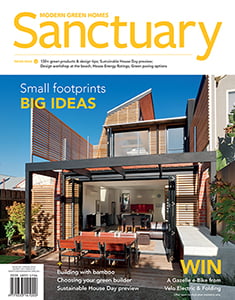Bamboo build
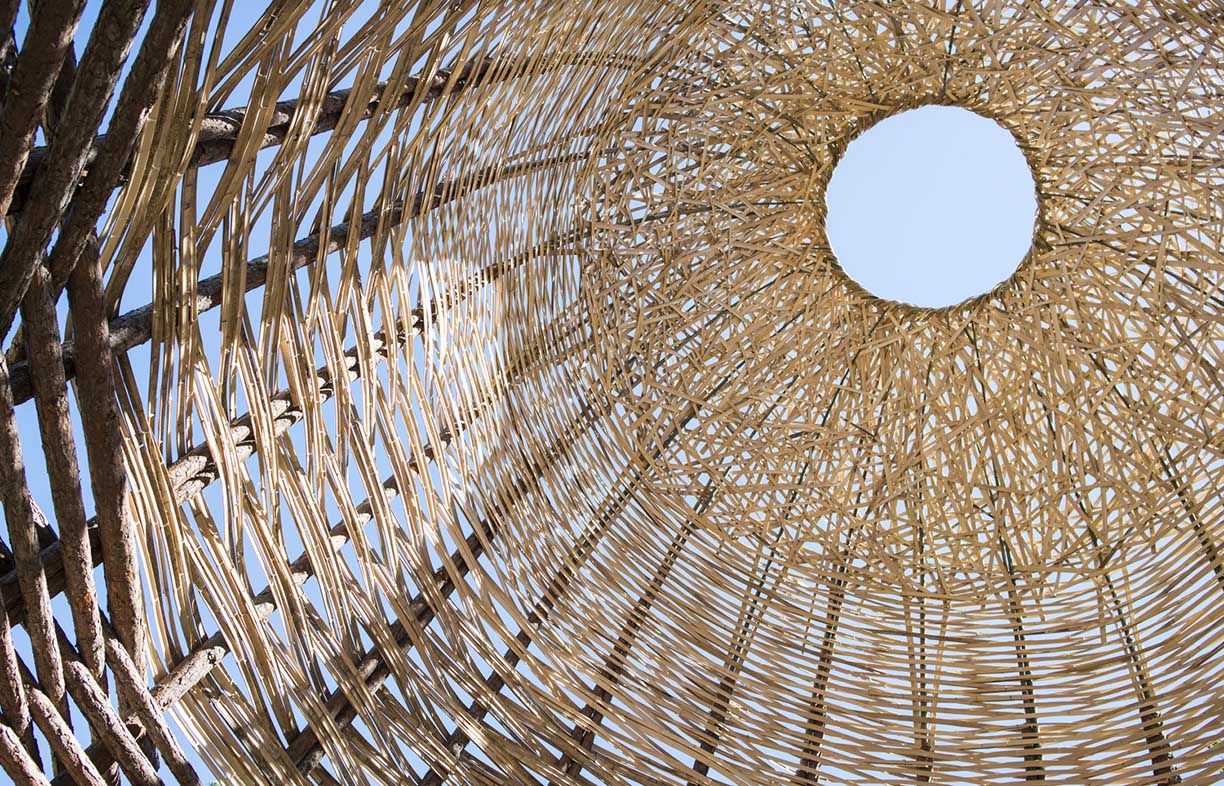
Used as a building staple in South-East Asia since ancient times, bamboo is now seen as the ecological choice for everything from floorboards to cleaning products, but just how green is this grass?
Lightweight and with the tensile weight-for-weight strength of mild steel, bamboo has been used as a building material across Asia and beyond for thousands of years. A grass rather than a timber, in the right conditions bamboo can grow up to 30 centimetres a day, and can be harvested without destroying the original plant. These qualities make bamboo one of the world’s most sustainable building materials.
Because of its fast growing time, ability to absorb carbon and its versatility, bamboo is frequently used in ‘green’ building products in Australia. It is commonly used in one of three ways: as a laminate, for its fibre, or less commonly, as a dried, usually woven material. Laminated products are used widely for flooring. Strips of bamboo are laid horizontally, vertically or chipped, then mixed with a resin, heated and pressed into boards. Other flooring options include ‘engineered’ bamboo products, where a layer of bamboo is adhered to a wooden substrate. As a fibre, bamboo is used as a key component of composites. Mixed with plastics and pressed into a variety of shapes and lengths, it is used for decking, panelling and other veneers. ‘Solid’ dried bamboo is usually woven into panels to be used in ceilings and cabinetry as well as interior cladding. Different manufacturing techniques also result in varying shades. When heated, a dark ‘coffee’ tone is achieved as the sugars in the bamboo caramelise.
The cost of bamboo products vary widely but they are generally competitive with other options. And, as interest in green building products grows, some manufacturers are switching to low- VOC resins and adhesives, while many composite products include recycled plastics.
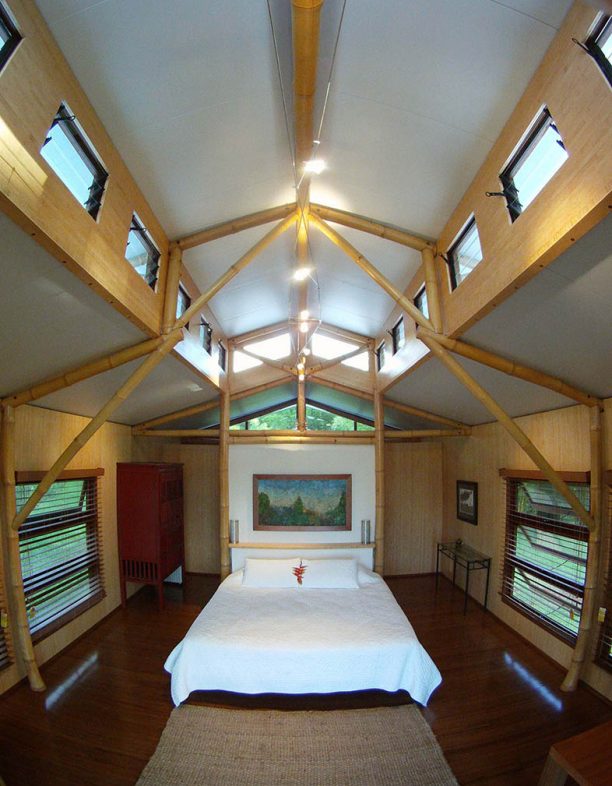
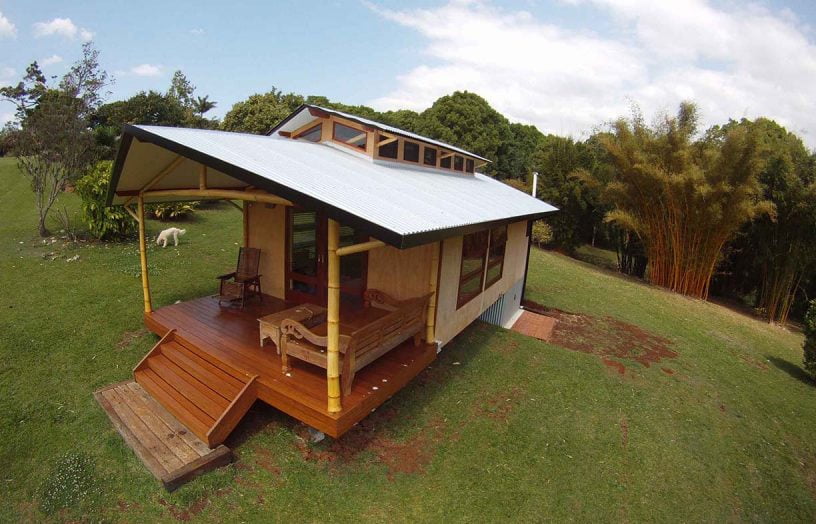
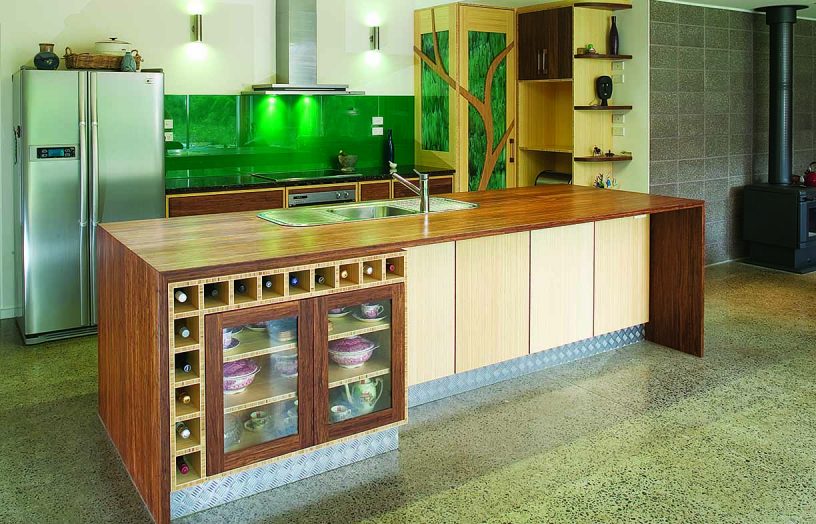
Bamboo building products in Australia are almost entirely imported from Asia, predominantly due to lower labour costs in both the production of the plant and the manufacturing of the resulting products. The impact of bamboo as a monoculture, the use of pesticides and toxic adhesives in the growth and manufacturing process, as well as shipping and transport, can all compromise bamboo’s environmental credentials, so it pays to investigate available choices.
Although bamboo is used in a wide range of products in Australia it is not currently rated as a structural building material, but this could change. Architectural designer at Cave Urban, Nici Long, designs and builds bamboo structures, including temporary pavilions and shelters for special events such as the annual Woodford Folk Festival in Queensland. She values bamboo for its sustainability and ease of use.
“Bamboo is incredibly easy to work with so a whole community can get involved with a project,” she says. “It’s lightweight, with low embodied energy and it’s biodegradable.” a
As a building material for permanent structures bamboo does have some significant shortcomings. As a grass, bamboo’s cellular structure is more water absorbent than timber, which can promote fungal growth and rot. Its high starch content makes it susceptible to insect attack, while its internal structure means that inappropriately placed holes can cause the lengths to split. However, as Nici argues, there are solutions on the horizon. Bamboo is already treated with a natural salt, borax, for powderpost beetle, and its growing popularity in the west is prompting research into alternatives, such as maximising optimal harvest time to enhance natural seasoning. This could potentially reduce or eliminate the need for additional treatments.
Water absorbency is addressed through ‘hats and gumboots’ — protecting the bamboo from the elements — while splitting can be prevented by placing holes and cuts near joints and using bamboo dowels that expand and contract with the body of the structure, rather than metal pins or nails that act, as Nici explains, “…more like a knife cutting through the material.”
There are other problems too — for instance, dry bamboo is highly flammable — but Nici is optimistic, “As research into technologies like fire retardants grows I think it’s likely we’ll see a bit of a rethink about using bamboo as a structural building material here in Australia. It’d be great to see a day when we could grow, harvest and build a home on site”.
In fact this is close to what fellow bamboo enthusiast, principal designer and eco-consultant of Barefoot Sustainable Design Jaye Irving, achieved with a prototype modular bamboo cottage. The project made use of over 200 poles harvested from the range of 40 species of bamboo grown on the 100 acre site near Bangalow, New South Wales. The structure was initially built in a workshop in Byron Bay and then reassembled on site amongst swaying bamboo culms.
There is also growing enthusiasm to develop bamboo as a commercial crop for the building industry in Australia, however, this too could be problematic. As ecologist Mark Harris of Southeast Engineering and Environmental points out, many species of bamboo are listed as a threat to agricultural productivity and as an invasive weed in many areas of Australia. Bamboo disperses easily through waterways and can quickly outcompete other plants in the right conditions, threatening biodiversity.
On top of that, when grown as a ‘timber’ crop, bamboo requires year-round watering and has relatively high labour requirements. However, proponents of bamboo as a building or ‘timber’ crop argue that these risks and problems can be adequately addressed and managed, making bamboo a viable and sustainable building option in the future.
Beyond bamboo building
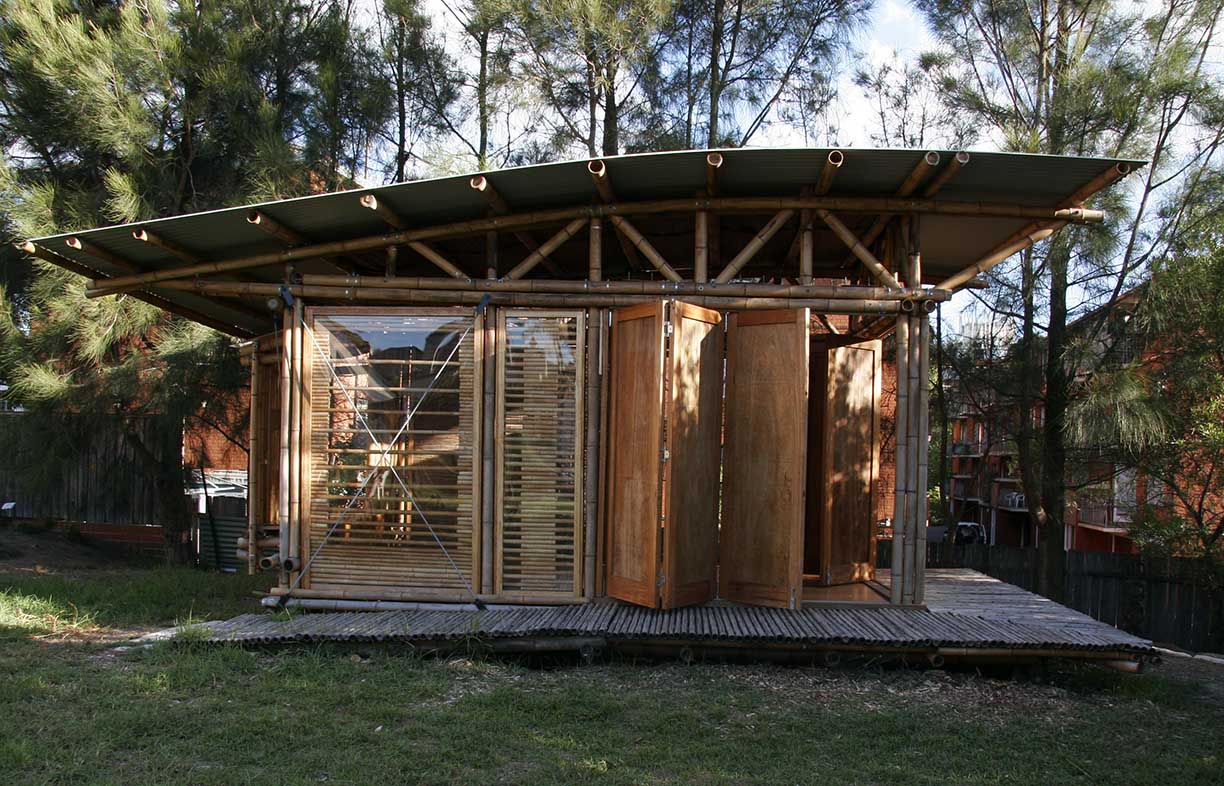 For founders of Giant Grass, Mittul and Munir Vahanvati, bamboo is much more than a building material. It’s also a tool for education, collaboration and social entrepreneurship: “For us it’s not just about the outcome, it’s as much about the process,” says Mittul. Bamboo was a chief component for their series of key projects: an eco-cubby, built for and designed by their then five-year-old son in their backyard as an eco-cabin prototype; a ‘watchtower’ built from reclaimed, locally harvested bamboo for western Melbourne social housing playground project, The Venny, which local children helped to design and build; and a ‘bamboo loveshack’ (as seen above) built as a permanent shelter in partnership with University of New South Wales architectural students as part of a practical sustainable resource unit.
For founders of Giant Grass, Mittul and Munir Vahanvati, bamboo is much more than a building material. It’s also a tool for education, collaboration and social entrepreneurship: “For us it’s not just about the outcome, it’s as much about the process,” says Mittul. Bamboo was a chief component for their series of key projects: an eco-cubby, built for and designed by their then five-year-old son in their backyard as an eco-cabin prototype; a ‘watchtower’ built from reclaimed, locally harvested bamboo for western Melbourne social housing playground project, The Venny, which local children helped to design and build; and a ‘bamboo loveshack’ (as seen above) built as a permanent shelter in partnership with University of New South Wales architectural students as part of a practical sustainable resource unit.
Giant Grass also run a range of hands-on workshops for all ages.


